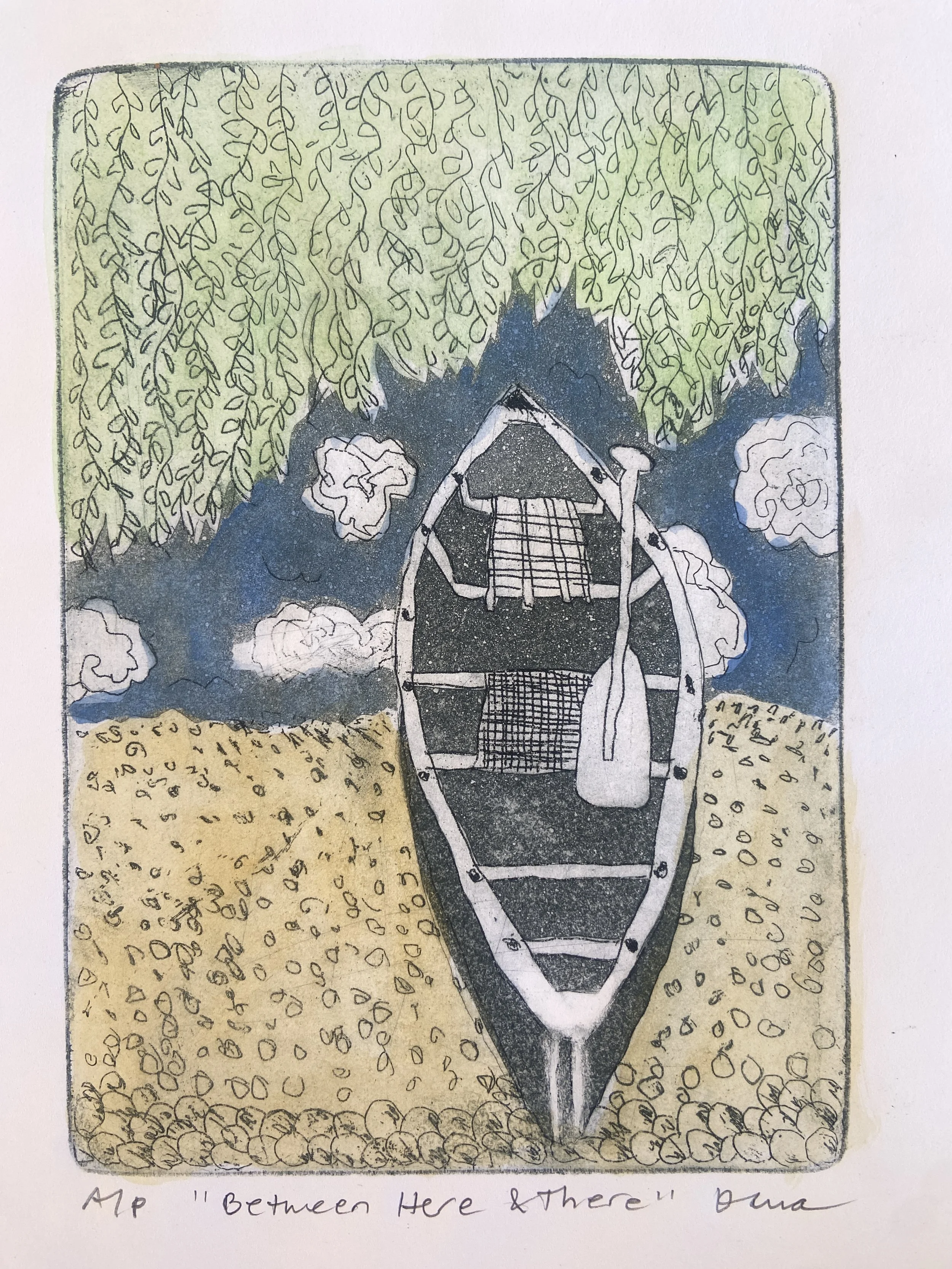Etching
Begins by buying an expensive copper plate. Hours are then spent filing the edges and rounding the corners so the plate does not rip the blankets of the printing press. After this the plate needs to be polished so that the background of your image is clear. Next the plate is covered with a wax type ground which is heated onto the plate. Then an idea is drawn and after it is drawn, it is transferred onto the plate with carbon paper. Using an etching needle one draws through the wax-like ground exposing the line drawing. The plate is then submerged into ferric chloride acid which etches the line. I leave it in the acid foran hour to complete this.
If one want shades of gray to black, the plate is partially covered (think powder like rain) and that powder is heated onto the plate. The area where one does not want the shade, have to be blocked out so they will not etch. After the blocking out is complete, the plate is then submerged again in to the acid. Varying times create varying shades of gray. So the plate is blocked and submerged over and over again.
Pattern can be added to the etching by pressing items that can safely go through a press (like fabric or dry grass for example) into the ground. Then the areas where the pattern is not needed must be again blocked out. Again, varying times and many acid baths are repeated until eventually the plate is finished.
Finally the paper to be printed on is soaked and the plate is inked and printed. The way the ink is applied can greatly effect the image so it can take a few artist proofs to get it right.
“Transmission Gallery” Oakland January 2024


